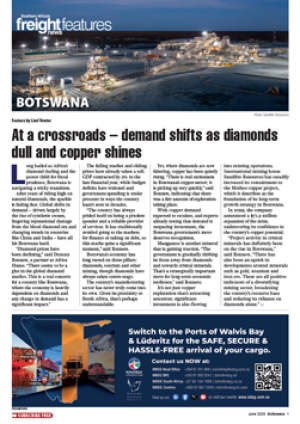State commits additional R17,5bn to speed up logistics chain Leonard Neill RAIL, ROAD and port operations in South Africa will benefit from an immediate investment of R17,5 billion from Government for the upgrade of facilities in an urgent attempt to meet the demands of the country’s export drive. Public enterprises minister Jeff Radebe has announced that R10 billion will be spent on locomotives, trucks and general rail infrastructure during the next three years to meet Spoornet’s needs. R1,5 billion will be allocated to port equipment, in particular cranes, during the 2004-5 financial year. A further R6 billion will go to road improvements and developments. This, says Radebe, is apart from the R45 billion that Transnet has budgeted to meet requirements of the three services during the next 10 years. “We reviewed the Transnet investment plan at a recent cabinet meeting and realised it was not adequate to satisfy the demands of the growing economy. We understood that something had to be done rapidly to keep the wheels turning. “ One thing that was agreed was that prices charged by Spoornet needed to be examined, he said. This was realised after the rail facility introduced rate rises last year saying its prices were not competitive with those charged by road hauliers. More cranes and other handling equipment were urgently required to combat port congestion, he said, hence the decision to commit a special amount to address the problem in the upcoming year. Radebe also has news for road transporters, who will be affected by decisions taken at the cabinet gathering. A plan to reduce axle mass limits on the roads, which has been awaiting ratification for a long time, is soon to be implemented. This will in turn reduce the amount of cargo which may be carried by a single vehicle, with the aim being to shift more cargo to the rail sector. The decision to facilitate the more rapid movement of cargo is part of the state’s endeavour to be the prime driver of gross domestic fixed investment, he says. Everything is being done to remove obstacles to the country’s export-led economic growth with more and more goods now flowing through roads and airports.
